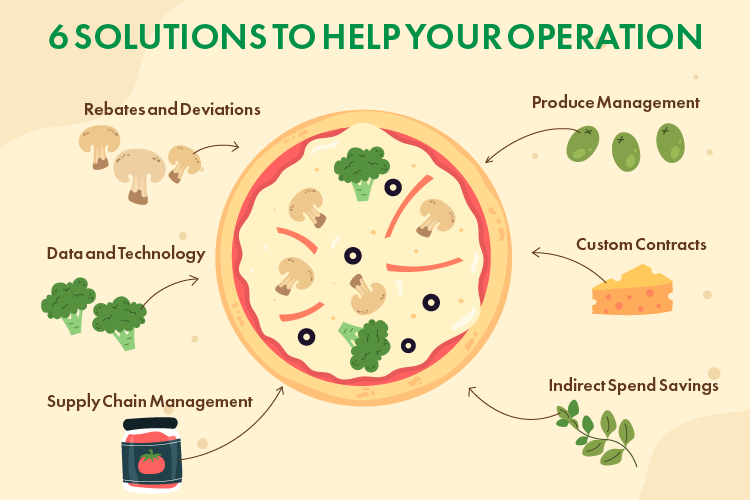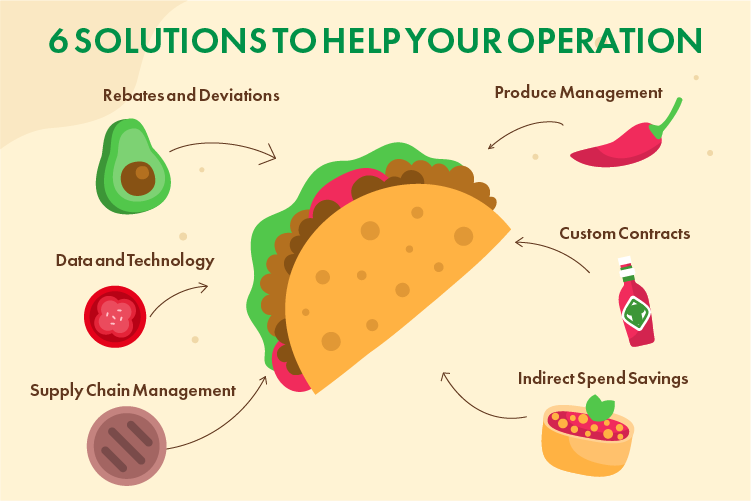Cost Management Solutions for Pizza Restaurants from Consolidated Concepts
Looking for cost-saving solutions for pizza restaurants? Running a successful pizza operation is no easy slice. From ensuring your dough is always on point to managing the complexities of high-volume service, pizza restaurants face unique challenges in today’s competitive market. According to recent reports, 76% of operators say their average food costs are higher, making it more critical than ever to control every part of your pizza operation.
At Consolidated Concepts, we know what’s at stake when you’re rolling out dough for the day or topping pizzas to perfection. That’s why our comprehensive services are crafted to help you manage everything from your supply chain to your spend management—so you can focus on serving up that perfect slice. Here’s how we can help your pizza concept rise to the occasion.

Rebates and Deviations
Who doesn’t love a little extra cheese? With our rebates and deviations programs, we ensure you’re getting the best possible price on essential ingredients like mozzarella and flour—helping you save dough on your dough.
Data and Technology
Cut through the noise of daily operations with data-driven insights. We analyze your sales data to help you craft the perfect menu, pinpoint your peak times, and streamline efficiency. Because who wouldn’t want to know when the demand for extra-large pepperoni pizzas spikes?
Supply Chain Management
When it comes to sourcing top-notch ingredients, we make sure every topping, sauce, and crust is delivered with quality in mind. By working with trusted suppliers, we keep your pizzas tasting as fresh as the day they were invented, offering cost-saving solutions for pizza restaurants through efficient procurement.
Produce Management
Tomatoes, peppers, mushrooms—oh my! We help you manage your produce inventory, so you can serve farm-fresh toppings without wasting a single slice.
Custom Contracts
No two pizza concepts are the same. That’s why we craft custom contracts tailored to your needs—whether you need to lock in a great price on sauce or negotiate a better deal on kitchen supplies. We work to deliver what you knead.
Indirect Spend Savings
From energy costs to office supplies, we help you uncover opportunities to cut costs and boost your bottom line. We’re not just saving you dough in the kitchen; we’re helping you run a more profitable operation across the board.
Don’t let doughy decisions leave you feeling flat. With 76% of operators already facing rising food costs, it’s time to toss those challenges aside and rise above the competition with Consolidated Concepts. Fill out the form below to partner with Consolidated Concepts today!

















